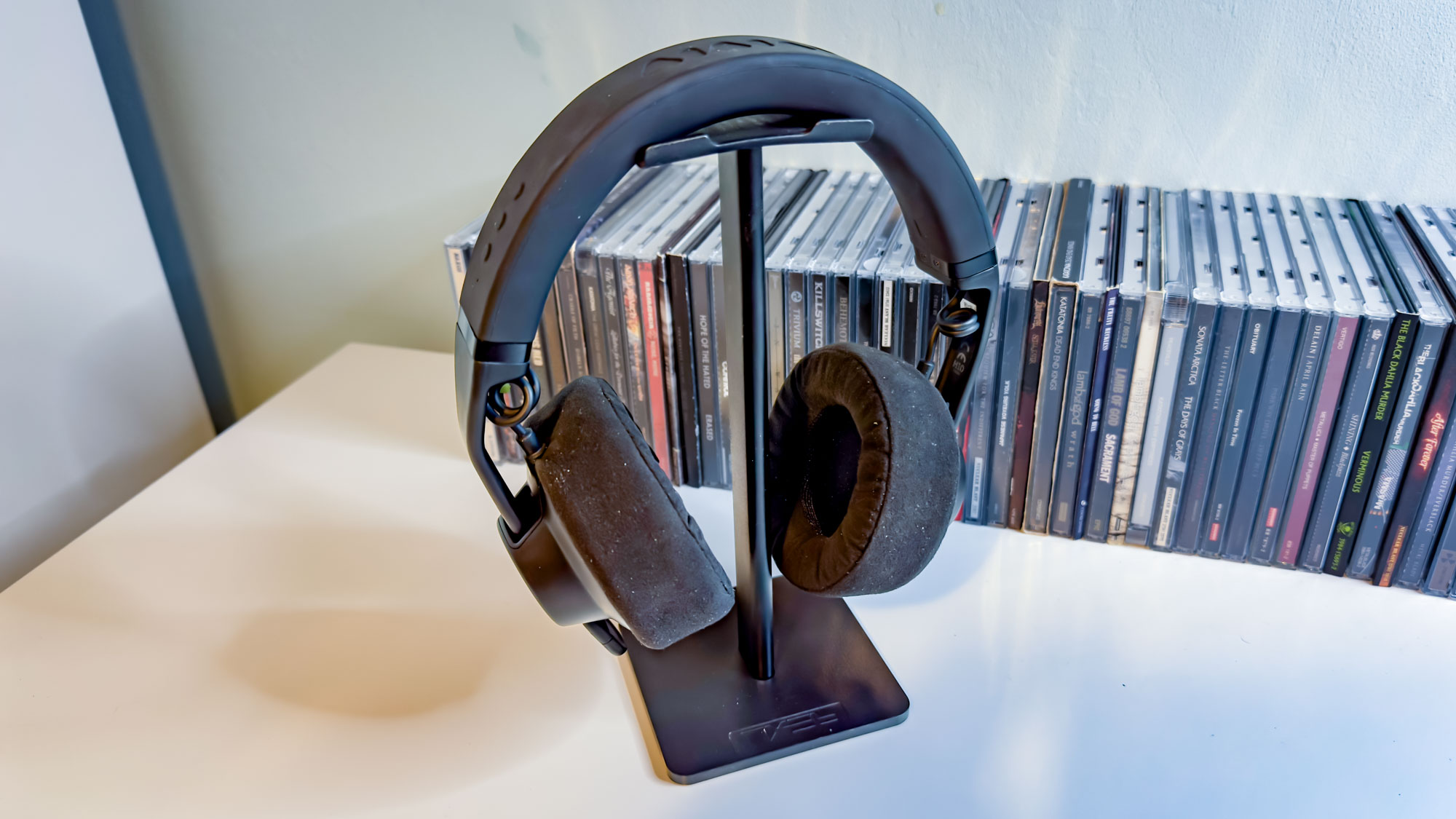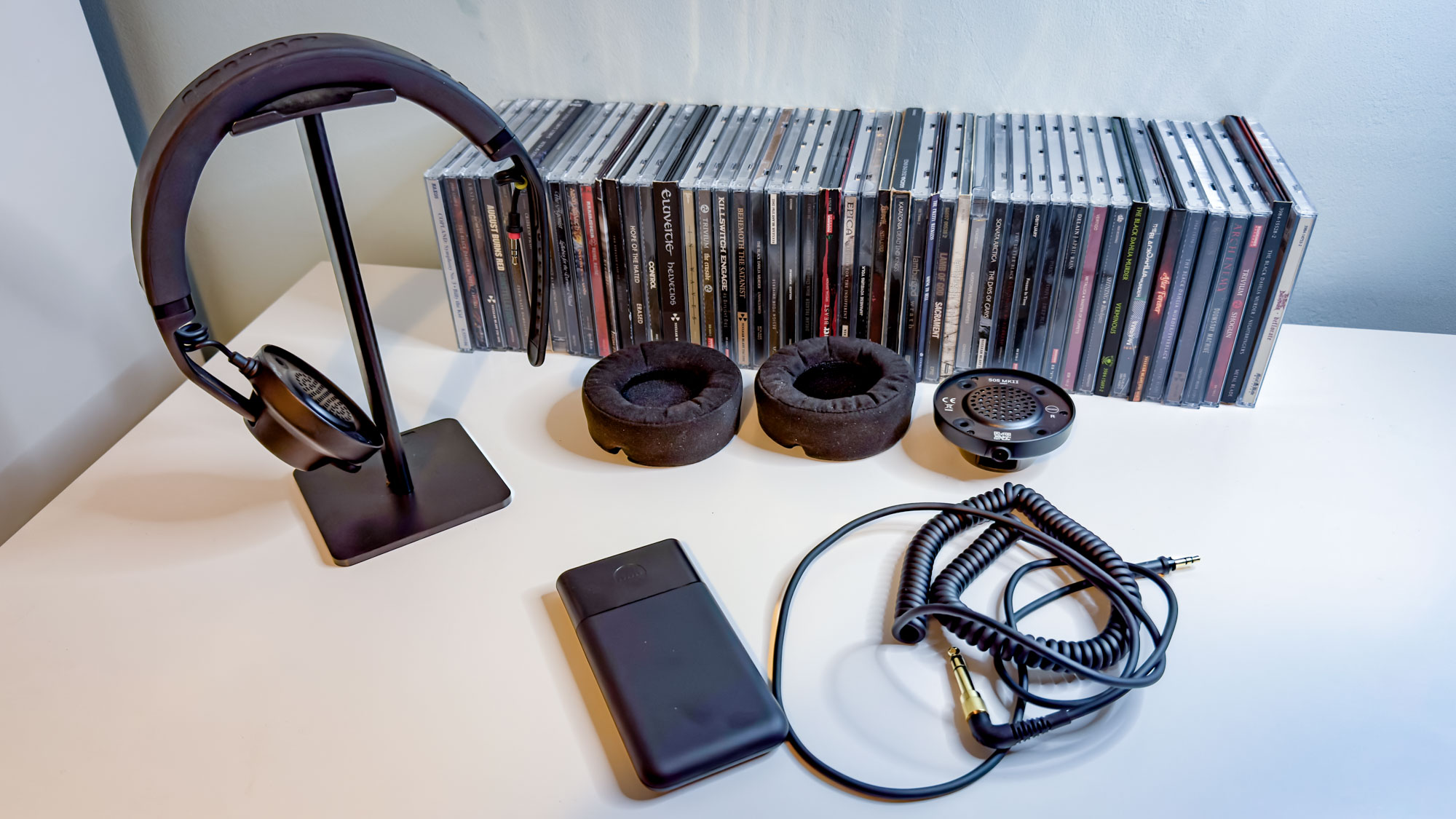
As with many tech products, the best wireless headphones currently live in a kind of environmental limbo. They’re not going to last forever thanks to the inevitable death of their batteries, or the degradation of their internal electronics. Then once they’re dead and unusable, they go in the trash. They become e-waste, ready to travel the seven seas without bio-degrading because they’re made out of plastic, precious metals, and various different kinds of resin.
What if, though, this wasn’t a problem? If you didn’t have to worry about your headphones dying, if you could replace the various parts when they go bad? That you could get those bits recycled when they’re done, and you get new ones to replace them? DJ and mixing headphone manufacturer AIAIAI have just the ticket — and they’re very, very interesting.
What even are they?

These are the TMA-2 Studio Wireless headphones, and they’re super cool. They’re a pair of Bluetooth and 2.4Ghz wireless headphones that come in parts. See, when you open the box, you don’t get a pair of fully built pair of headphones, ready to wear and use. You get a set of black plastic bags containing bits of the headphones — a large one with your headband in it, two smaller ones that hold the driver units, one that holds both your earpads, and bags containing the cables and a cool black box, that I’ll get to later.
In my box, I got the wireless headband and Alcantara earcups. Building my headphones was super easy — they just clip together. I barely needed the instructions, although you do have to make sure that the red right driver unit is plugged into the corresponding red socket so that you can avoid… issues. Once built up, you plug the headphones in with USB-C, and away you go.
This modular approach has a couple of upsides. For one, it means they are very customizable — there are loads of different options in terms of earcups, driver units, and even headbands on the AIAIAI website. Don’t like over-ear headphones? Pick up the on-ear earcups instead. Want a different sound signature? Choose a different pair of driver units.
Then there are the environmental considerations. If you send back broken bits, AIAIAI will send you a new one and recycle the old bits. You can even trade in your old bits for newer ones when they are released, so your headphones will never go out of date. That means less e-waste, and far less detritus to clutter up a world struggling to keep up with technological development.
Do they work?

First and foremost, these are DJ and mixing headphones, so they work best with a wired connection. When you hook their cable (which has adapters included for mixing desks and laptops) up to a music source they sound great. Bear in mind that they’re supposed to be fairly analytical, and you’ll find a very good, accurate sound profile that’s great for dialing in the perfect mix.
The highs are crisp, the mids well-rounded and the bass impactful and strong. While they might not be the bassiest thing in the world, they are still solid sounding headphones. Even for normal listening, most people will be served well by their wired connection.
Then there’s that little black box — it’s a powered wireless adapter that allows for much higher quality and super low latency for mixing without being connected by a wire. The adapter connects to a headphone socket, and then transmits the signal that the headphones pick. Sound quality here was almost as good as wired, and should free you up for use in and around the studio.
Then there’s Bluetooth. It’s a nice addition, but I did find that sound quality dropped when connected like this. The bass dissipated, and the highs became. For normal listening, they’re not going to be much good. Even for mixing the Bluetooth mode is disappointing, losing that fabulous neutrality and definition.
Who are they for?

In case it wasn’t obvious already, these are not really for use as a pair of "out and about" headphones. They’re designed for audio mixers and DJs, and for those users, they are going to be a great addition to their studios. As for the rest of you, those looking for a pair like the Sony WH-1000XM5 or AirPods Max, you’ll be better served elsewhere. The Bluetooth connection simply isn’t up to scratch, and there’s no ANC. Battery life is incredible though — you get 80 hours of battery on tap.
As a product, I really like them as well. They’re built well, with solid construction all round. I really like their modular nature — and it actually gets me thinking. What if this was how all our headphones worked? You could choose your headband, your earcup material, and what kind of sound signature you’re going for. You wouldn’t worry about your headphones dying anymore, knowing you could trade in the broken bits for new ones when they stop working.
So, the bottom line; the TMA-2 Studio are a great investment for mixers and DJs everywhere, freeing you from the restrictions of tethering yourself to a mixing desk. For normal listeners, they’re less a good idea, unless you like wired listening. But it's what they say about the future of headphones that should make you interested in them — and I hope that we see more similar products like this somewhere down the road.







